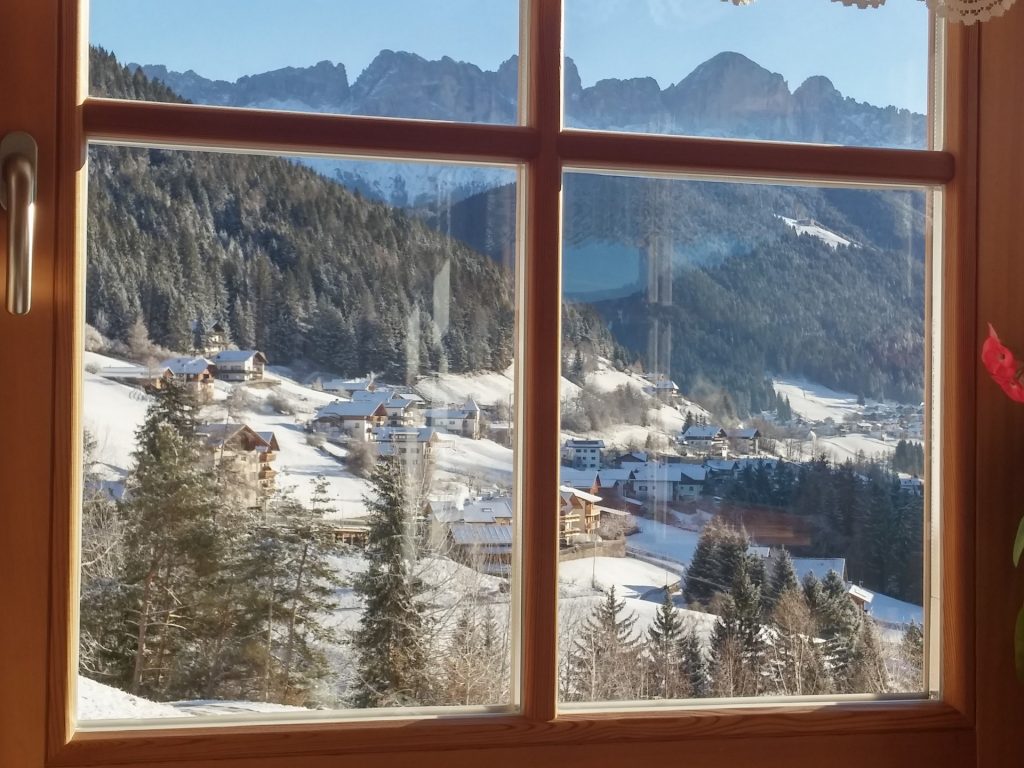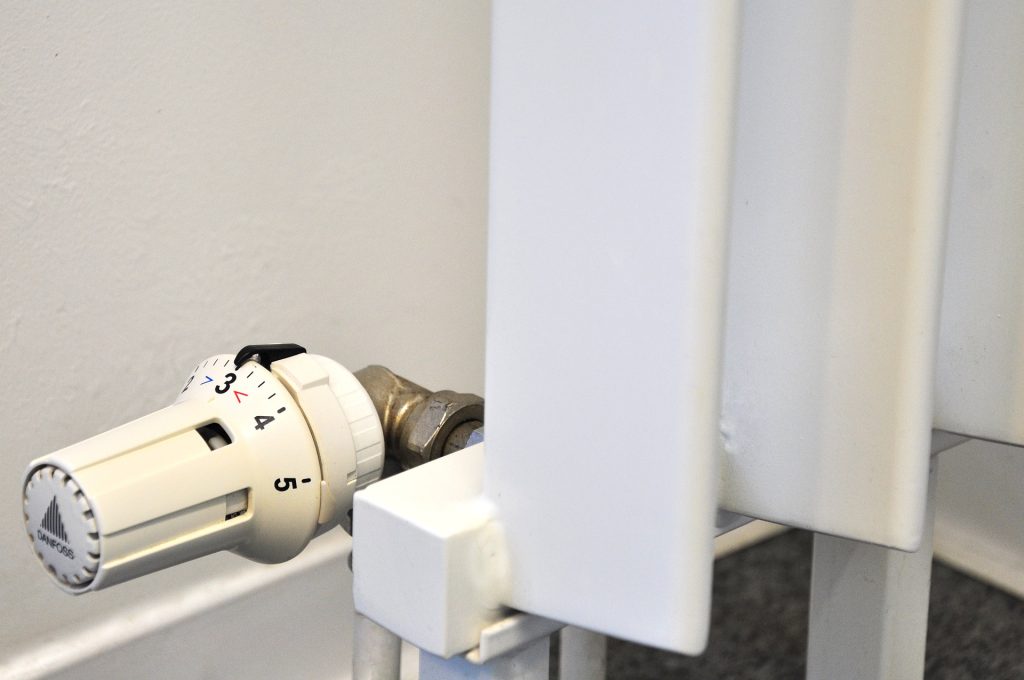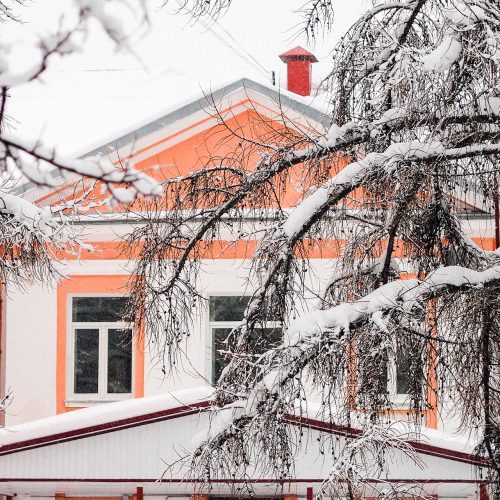Warmth and fresh air
Save heating costs with ventilation
Why ventilate in winter?

Did you know?
1 degree less heating means approx. 5% heating cost saving
Correct ventilation
Shock ventilation instead of tilting
Cross ventilation

Did you know?
The walls and objects release the stored heat back into the room after ventilation. The fresh air contains less moisture and therefore warms up faster.
Regular ventilation
If you are out all day, it is sufficient to air the apartment in the morning and in the evening. Otherwise, for hygienic reasons, it is recommended to completely exchange the air at least three to four times a day. You should always ventilate the kitchen and bathroom when large amounts of water vapor have formed – zum Example after cooking or bathing.
Winter
Air 3 times a day for 3-5 minutes
Spring / Autumn
Air 4 times a day for about 10 minutes
Summer
Air in the morning and evening for 25 minutes
Economical heating

Maintain the optimal room temperatures
Just one degree Celsius less saves around 5% on heating costs. Therefore, the living rooms should be heated according to their purpose. 18 degrees Celsius are sufficient in the hallway, bedroom and kitchen. At 20 degrees, the living area and study have the optimal temperature. In the children’s room and bathroom it can also be a little warmer at 22 degrees Celsius. Thermostats help them to keep the right temperature.
Make sure that unused rooms are kept at a minimum temperature of 14 degrees and that the doors of heated rooms remain closed to prevent mold growth.
Pay attention to free radiators
Do not place any furniture in front of the radiators so that the warm air can be optimally distributed in the room. Also, do not put wet clothes on the radiator. It is better to dry your laundry on a drying rack.
Bleed your radiator so that unnecessary air escapes and the radiator can heat up to the set temperature faster. All you need is a radiator key, a container to collect the heating water and a rag.
Turn down heating instead of turning off
Don’t turn the heating off completely overnight or when you’re away, as it’s more expensive to reheat a cool room. Better keep the average temperature lowered to 16-18 degrees Celsius and turn the heating down.
Did you know?
Saving heating costs is easy on your wallet and environmentally friendly at the same time: with the right method, you reduce CO₂ emissions.
Energy-efficient ventilation and lower heating costs
Decentralized ventilation systems with heat recovery ensure continuous fresh air indoors and can reuse up to 94% of the exhaust air heat with the ceramic heat accumulator. The ceramic core stores the heat of the interior air when exchanging the used air and gives it off to the fresh air flowing in from the outside. As a rule, the living room air is completely exchanged every 2 hours. The strength of the ventilation adapts to the individual needs of the residents.
You can get fresh and warm air into your rooms without having to open the window all the time.
Why is a decentralized ventilation system with heat recovery worthwhile?
No draught
Unlike open windows, decentralised ventilation provides a continuous exchange of air. This avoids strong draughts in the flat.
Fresh air without cooling the rooms
If the windows are open too long or permanently tilted, this causes the walls to cool down. As a result, more heating energy must be used to warm up the rooms again. Ventilation with heat recovery guarantees fresh and warm air without cooling down the flat.
Save heating costs
Mit unserer dezentralen Lüftungsanlage mit Wärmerückgewinnung können bis zu 1/3 der Heizkosten gespart werden. Die Wärme der Innenluft wird beim Abziehen dieser im Keramikspeicher gespeichert und an die einströmende Frischluft abgegeben. Die Wärme bliebt im Gebäude und die Heizung wird entlastet.
Low power consumption
The Xenion fan requires only 0.15 W/(m³/h). Depending on the electricity provider and the utilisation of the ventilation units, electricity costs are approx. 5-7 euros per year per ventilation unit.
Environmental friendliness
A ventilation system not only has low power consumption, but can also save up to 1/3 of the heating costs. Resources are conserved, which means that CO₂ emissions can be reduced. The ventilation system is an elementary step in the energetic renovation of houses.
Frequently asked questions about ventilation and heating

Why does ventilation save on heating costs?
In contrast to tilted windows, intermittent ventilation saves energy and at the same time helps to prevent mold growth.
How do you save the most heating costs?
Through a good balance between ventilation and heating. Regular airing is best instead of leaving the windows open all the time. Furthermore, the heating should not be switched off completely at night and when you are away, but only turned down.
What happens if rooms are not heated?
Mold can quickly form in rooms that are never properly heated. Moisture can get into the permanently cold room through open doors of heated rooms and thus condense the moisture on the cold walls.
Our tip to save heating costs with ventilation:
At the federal level, individual measures such as ventilation with heat recovery for existing buildings can be funded within the framework of the BEG in Germany. Read more about it here:


